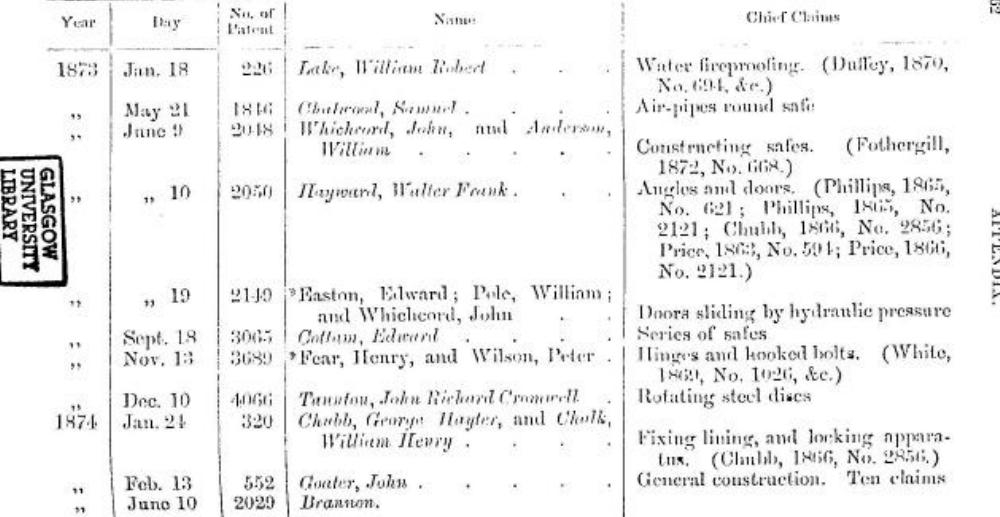This entry contributed by and © R.A. Beck, 2007
This list contains many of the names that safe plate collectors will encounter. They are also likely to regard the plates bearing such names to be among the most important in their collection. E. Tann & Sons followed by Chubb's led the way in English safe manufacture. However Milners' were close alongside them. Thomas Milner founded Milner & Co in 1839 and in 1840 he gained patent number 8401 for an invention to make safes fireproof. In 1900 his company was to make the claim of being "The Largest Manufacturers in the World of Safes, Strong Rooms, etc.". So there will be an endless amount of Milner's plates on the market!
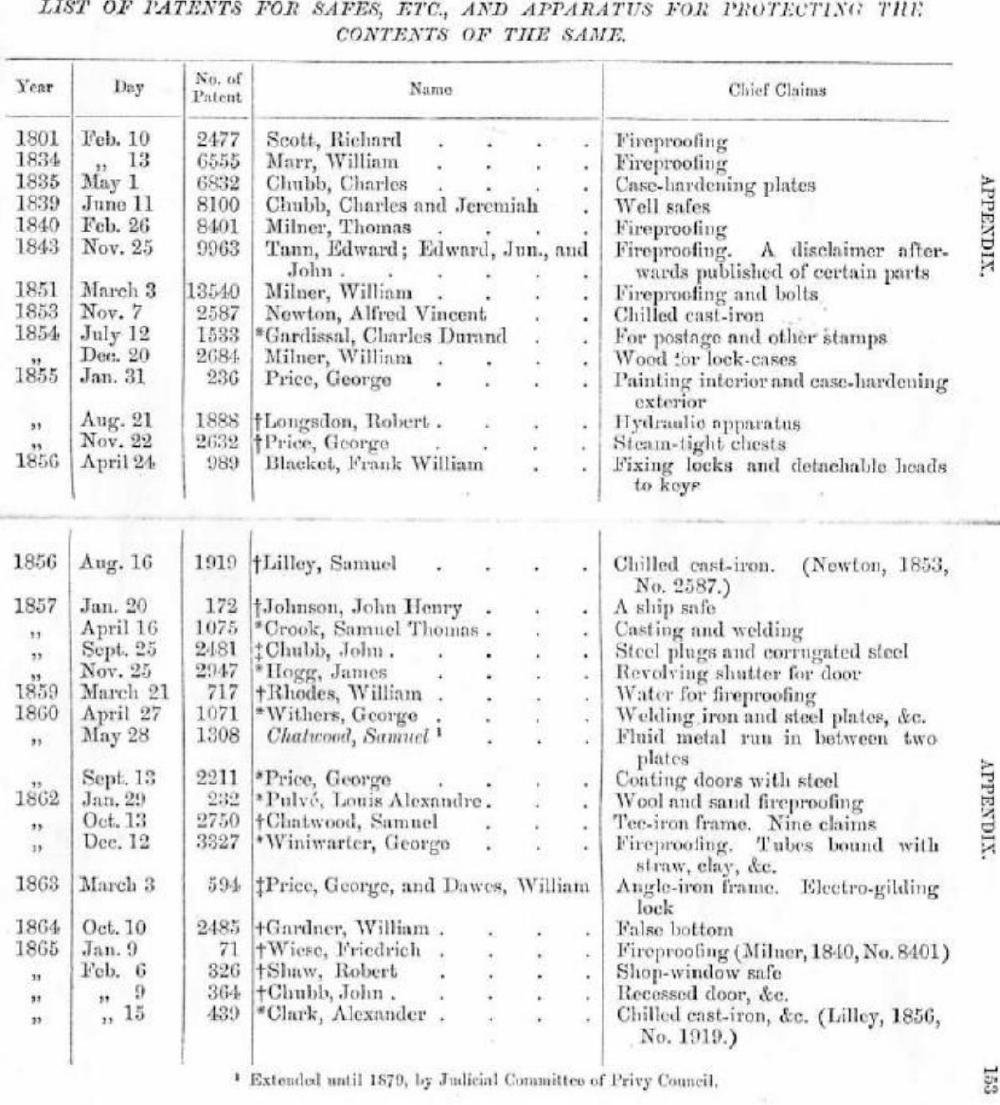
Three other leading makers were Hobbs & Co (1851), Samuel Chatwood (who started producing safes c.1858, and formed Chatwood & Dawes in 1861 then, after Dawes left to join George Price the firm became Chatwood Patent Safe & Lock Company in 1864), and Ratner, in 1890, called Ratcliff & Horner Limited when Daniel Ratcliff vacated his position as Chairman of Milners' to start his own busines with their Sales Manager, Douglas Horner. In 1895 they were re-formed and became Ratner with two parts of their names joined together.
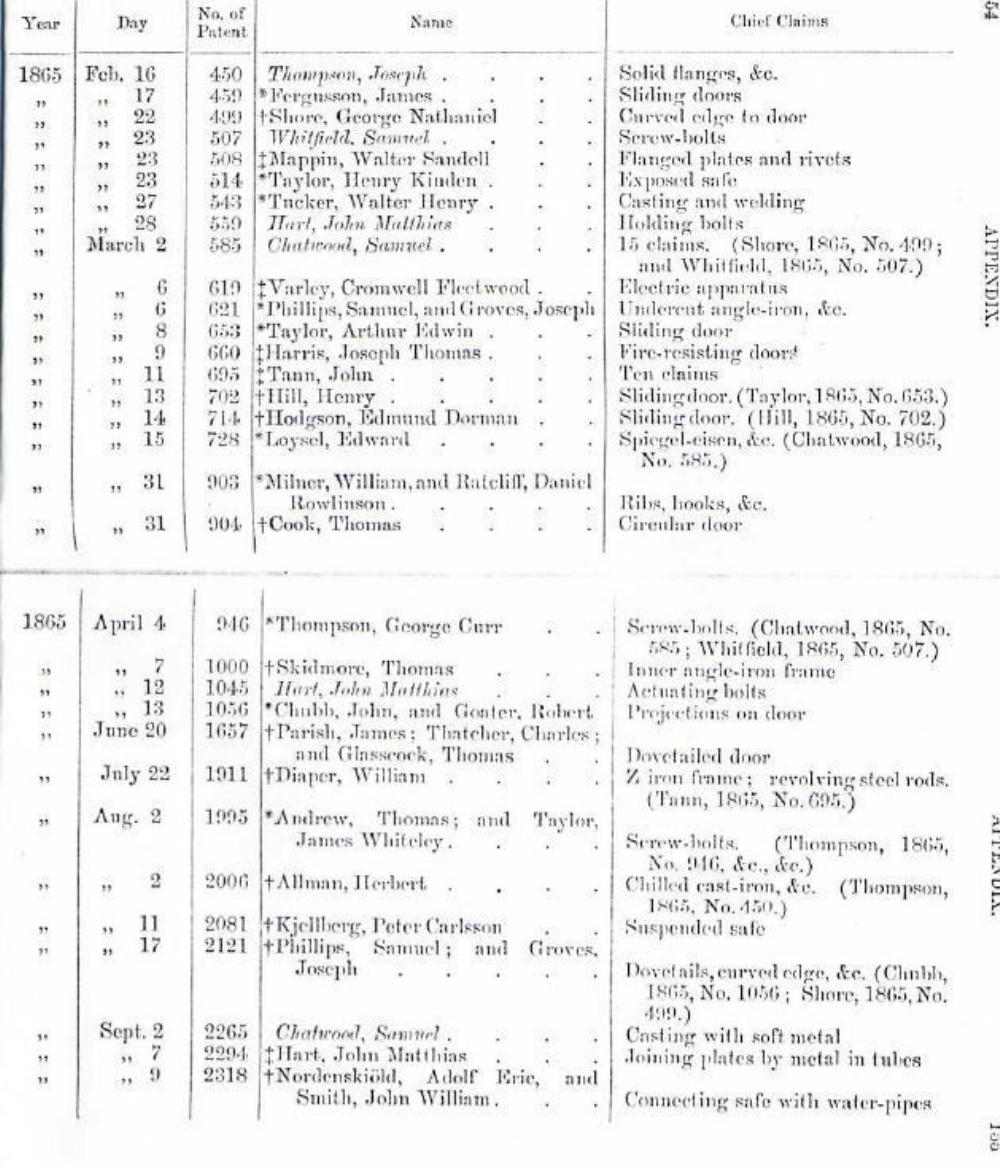
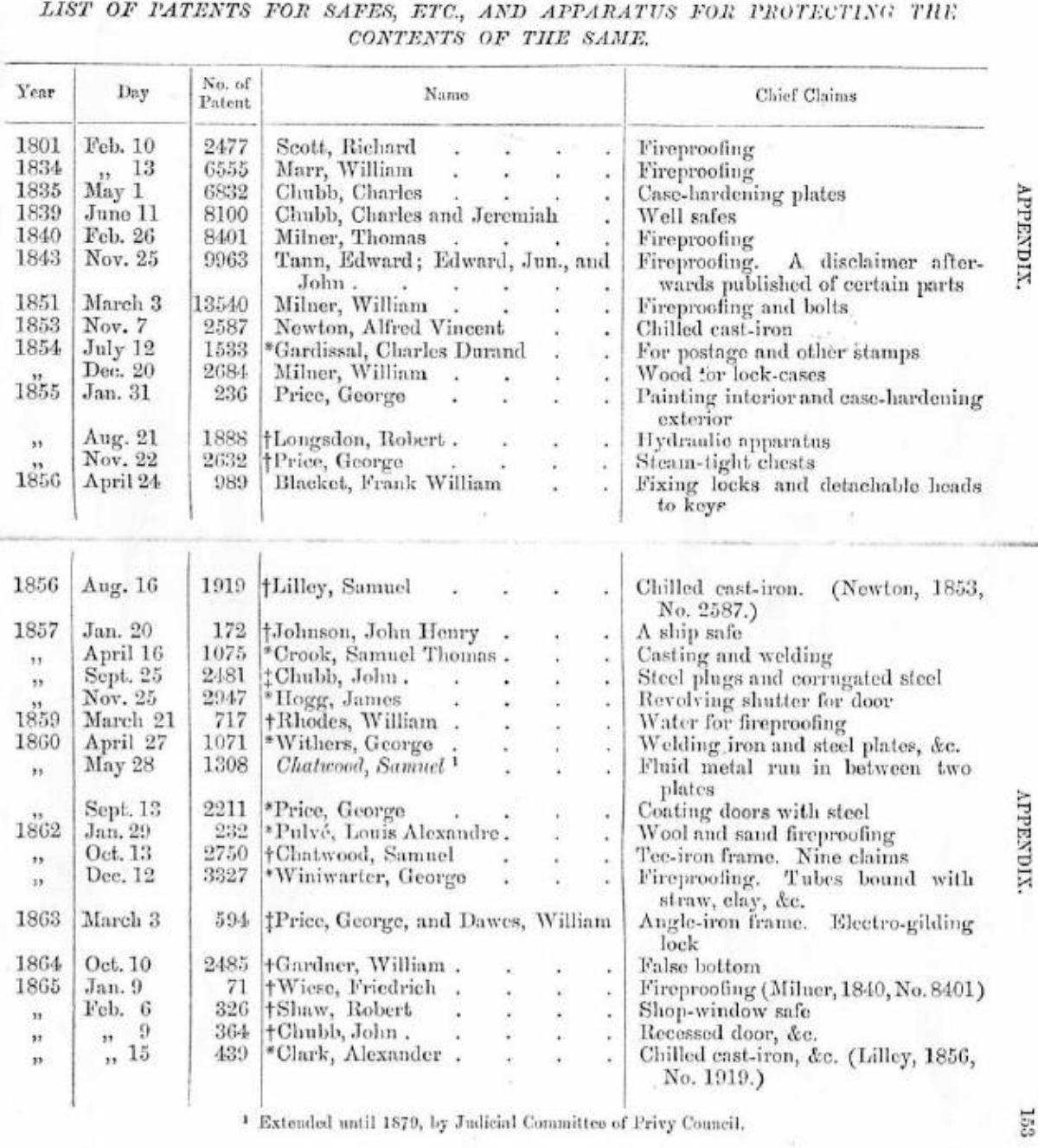
George Price too was high up in the list of quality safe makers and obtained five patents for his safe related inventions. In the mid-Victorian period safe manufacturers competed strongly against each other. George Price had a particularly strong feud with William Milner of Liverpool. His company was acquired by Gibbons of Wolverhampton in the 1930s depression.
Among this second tier of makers was Thomas Skidmore, of Wolverhampton, Established 1850; Samuel Whitfield (1840), who used Cotterill's locks in his safes and was succeeded by son Frederic Whitfield (c.1880) who chose Mappin's patent locks from c.1862; Thomas Perry (Est'd 1806 as iron founders, then armour plating and went on to safe making); Cyrus Price (1840) and was also acquired by Gibbons in the 1930s, plus Samuel Withers (1855) who continued to work as a family business until the late-1960s.

The third tier of Victorian safe makers consisted of roughly 40 or so smaller firms centred around the Birmingham area. They included E. Cotterill & Co whose main interest lay in the manufacture of his famous Climax Detector lock patented in 1846; Jacob Cartwright (Est'd 1844 in West Bromwich; J. & H. Brookes (Star Safes, Cape Works, Birmingham); Griffiths, London; and E. Hipkins & Co of Dudley.
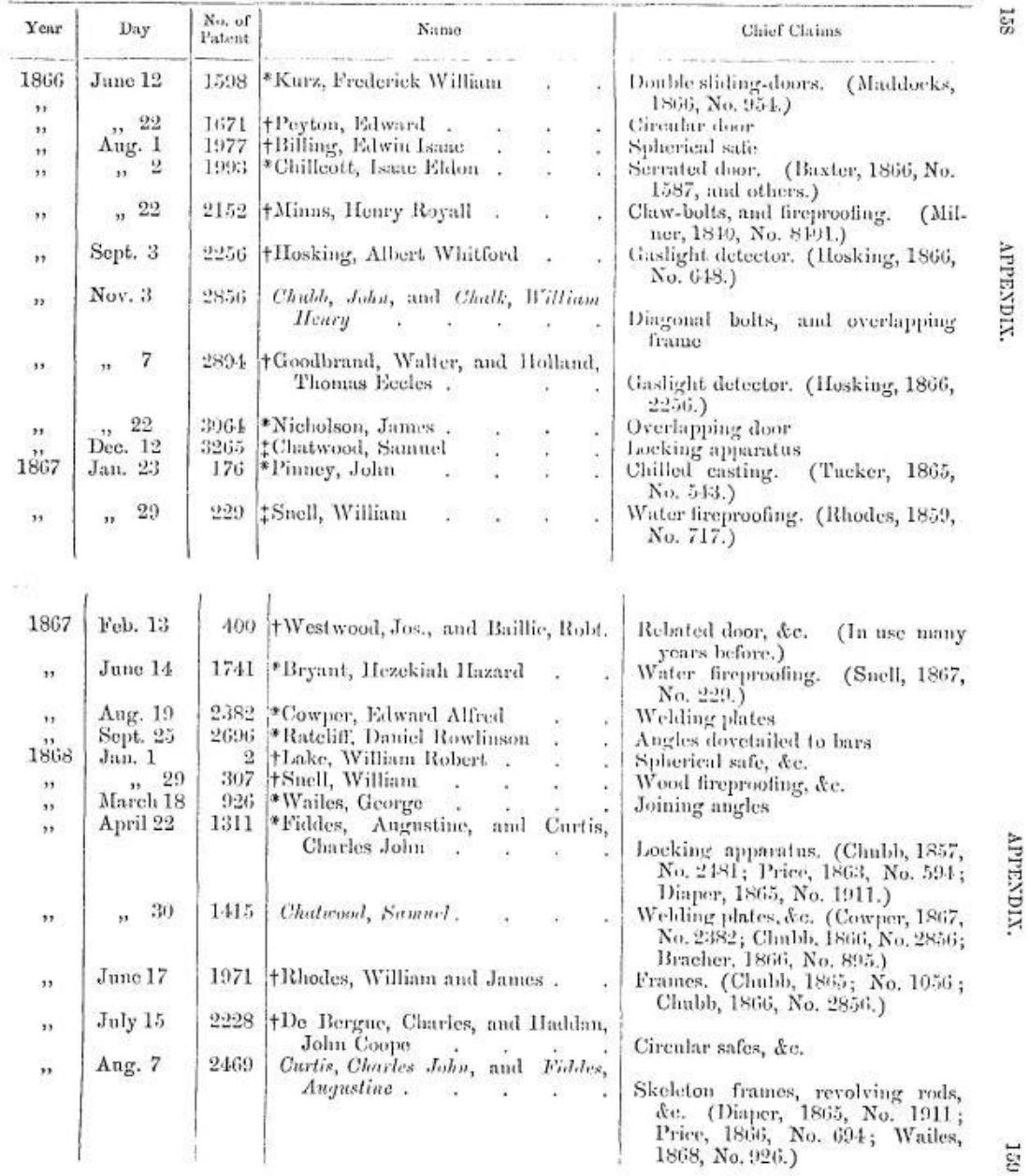
With only one or two exceptions all the safes manufactured by the third tier makers were regarded as fire-resisting quality only. Their products were not considered sufficiently satisfactory to resist any serious attack by the methods practiced at the time when their safes were made.
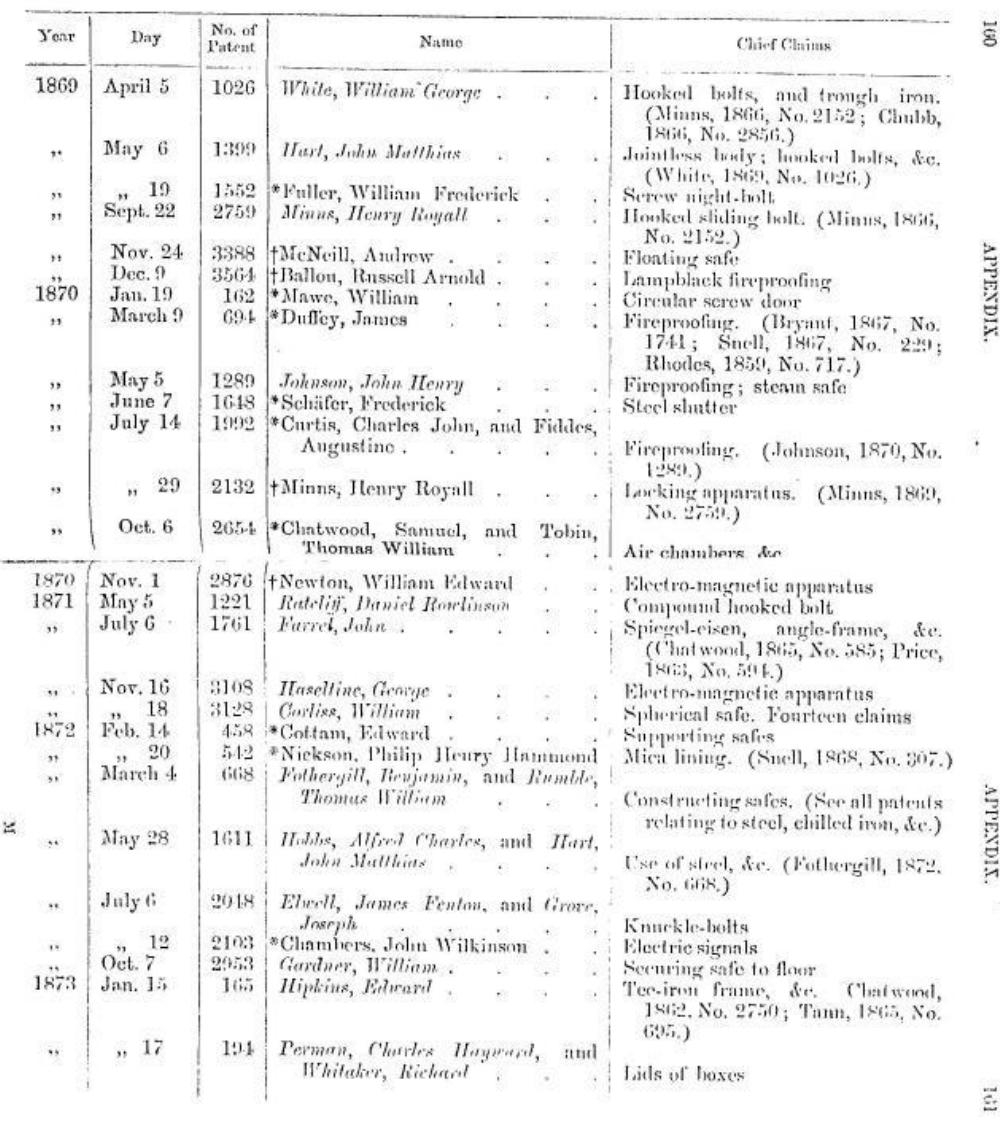
The preceding information about the tiered status of safe makers was adopted from the web site www.safeman.org.uk - "a concise history of safebreaking". However it omitted the name of Milners' and that of course had to be included in the first tier. No others have been added to the list but I would have thought a place should have been provided for Lumby's of Halifax who won Gold and Silver medals at the Paris International Exhibition of 1878; also John Port of Manchester, and of course, William Marr who secured a very early patent for fireproofing in 1834.
Should anyone wish to make any comments, particularly about this point please get in touch with us at the contact address shown on this web site.
